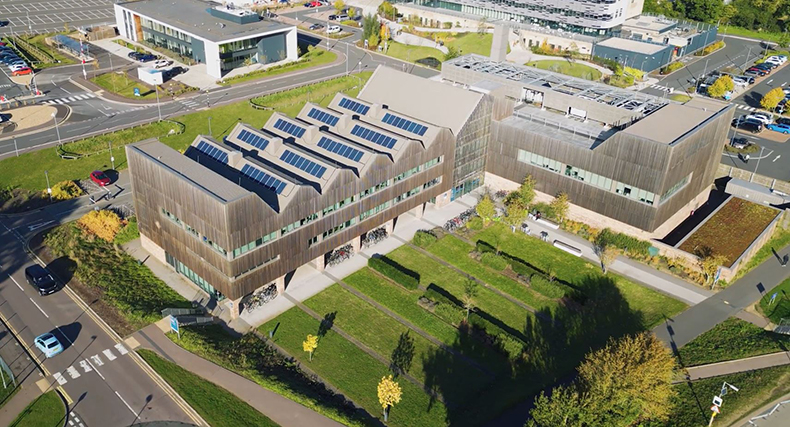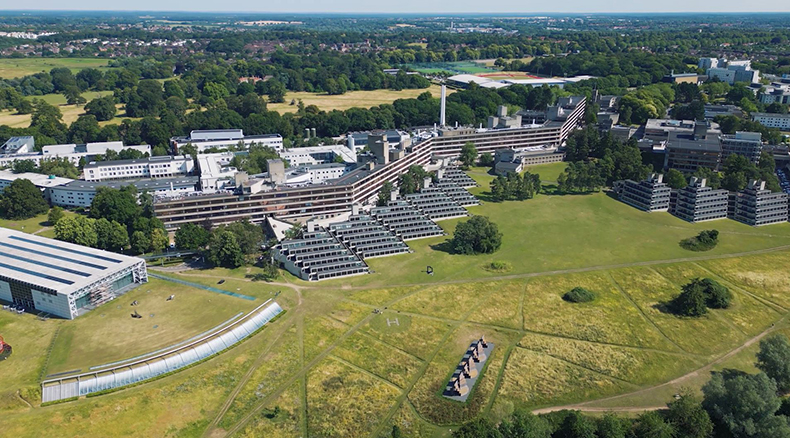:focus(510x211:511x212))
HealthUEA is the third interdisciplinary research theme to be launched by UEA. We spoke with Prof Ian Clark, the theme’s Academic Chair, to find out why health was the obvious choice for the third theme, what HealthUEA seeks to achieve and why he is championing this important initiative.
What is HealthUEA?
Health is a hugely important and valued thread of research across the university. It is an existing area of research strength and has this in common with the focus of the other research themes: CreativeUEA and ClimateUEA, so HealthUEA is about putting UEA health research on the map. It’s us saying to the world, ‘this is something we’re great at!’
The establishment of the research themes is a marker of commitment from the university to maintain and develop those areas, and we want researchers, potential partners and the public to engage with the high-quality research taking place at the university. Essentially, HealthUEA is here to act as a conduit of communication and collaboration internally between faculties, engendering interdisciplinarity, as well as externally between the UEA and the wider community. It’s also here to illuminate the amazing things happening in health research at UEA across all four faculties. Perhaps some things which are not quite mainstream have the habit of seeming a little hidden; HealthUEA will help to uncover those.
"HealthUEA’s mission is to help bring research partners together, where such collaboration often results in an outcome that is more than the sum of its parts."
On the topic of collaboration, we must remember that we are in the fortunate geographic position of having partners across the Norwich Research Park, including at the Norfolk and Norwich University Hospital, a stone’s throw from the university. This is an extremely unusual and immensely beneficial situation to be in, but that doesn’t mean that researchers across UEA or in the wider research park are aware of everything that each other are doing. HealthUEA’s mission is to help bring research partners together, where such collaboration often results in an outcome that is more than the sum of its parts.
One vital aspect is creating external visibility so that people hear about HealthUEA and think ‘I’d really like to get involved in that.’ To have this face of the university that can generate that relationship is hugely valuable – it feels like a supportive role through which we add value and cohesion to the work that’s being done. We want to shine a light on health research so it's visible to everyone, bringing together people who would not naturally be research partners, but who can benefit from each other's work.
What is your personal area of expertise?
It’s easy to ramble, but I’ll try to keep it short. I’m a Professor of Musculoskeletal Biology and my interests primarily lay in osteoarthritis, which is a degenerative disease of the joints. One of the major symptoms of that disease is pain. There are around 8.5 million sufferers of moderate to severe osteoarthritis; 6 million of those are in constant pain. The major risk factors for the disease, and there are several, would be increasing age and increasing obesity. Changes in the population mean that both of those things are increasing. There is no medicine that we can give to patients that either prevents osteoarthritis in the first place, or slows its progression, so research into this disease is crucial and potentially life-changing to swathes of the population. We have become very interested in the role of nutrition in osteoarthritis.
Having the Norwich Research Park nearby is hugely beneficial as we have colleagues in other research institutes who have complementary skills; whether that be plant biology at the John Innes Centre or gut microbiota at the Quadrum Institute. Osteoarthritis is a disease we are striving to know more about and when you meet other people you realise we all have some of the answers; pieces of a gigantic puzzle. Only through collaboration can we hope to solve the puzzle.
How has your career led to you becoming HealthUEA academic chair?
That’s a really interesting thing for me to consider. There are several aspects. Firstly, I've been at UEA since 1996 – a long time! - so I know how things function across the university; what makes it such a fantastic institution. The projects that I have worked on have helped me forge connections with other faculties and institutes across the research park, and the hugely impressive researchers that work here.
Primarily, though, as I enter the latter stages of my career, I want to make a difference to health research at UEA and the wider research park. I thought, with all the facets of knowledge gained from a long career at this university, I'm in an excellent position to bring people together and to highlight and help develop the incredible research being done here.
Why is it important to collaborate across faculties?
It’s about providing a more holistic view. I’m a laboratory researcher for example, but if you want to take results from the lab and find out how that research is used in humans then the laboratory is just the first part. You have to consider, for example, how you can modify behaviour and what is acceptable to people. That’s behavioural research so I’d need to engage with colleagues from other disciplines in order to truly maximise the potential of my research. Somebody once told me that a significant part of clinical recovery is expectation – what people feel about what is happening or going to happen to them, so disciplines within arts and humanities can provide an insight into people’s feelings and experiences. Bringing people together who have different viewpoints or areas of expertise undoubtedly adds value.
How will HealthUEA collaborate with the community?
In part, HealthUEA is an outward facing conduit. We want people to know about it so they can talk to us and ask about how they can be involved. UEA has institutions like the Citizens Academy and part of their remit is engaging the local population in research. Engaging with the community is vitally important in providing understanding about what people want to know and what would benefit them most. It allows the public to help set the research agenda.
"There are bigger and better outcomes to be had through collaboration than working on one’s own."
We also cannot ignore that, within society, universities are sometimes perceived to be an ivory tower, separate from real life; HealthUEA is here to break down those barriers and misconceptions. We’re here to spread the message that UEA is a world-class university, producing world-leading research AND we’re accessible.
HealthUEA is largely about enabling things to happen and championing them. When you walk around campus, you’ll see call outs for participants for research or collaboration on projects, but it’s about getting that message out there on a much wider scale and delivering it to people who will be able to add significant value. People are hugely enthusiastic ONCE they know what is going on. So making sure those people are aware is key.
We want the research community to engage with HealthUEA; to explore UEA’s research and forge fruitful connections, because there are bigger and better outcomes to be had through collaboration than working on one’s own.


